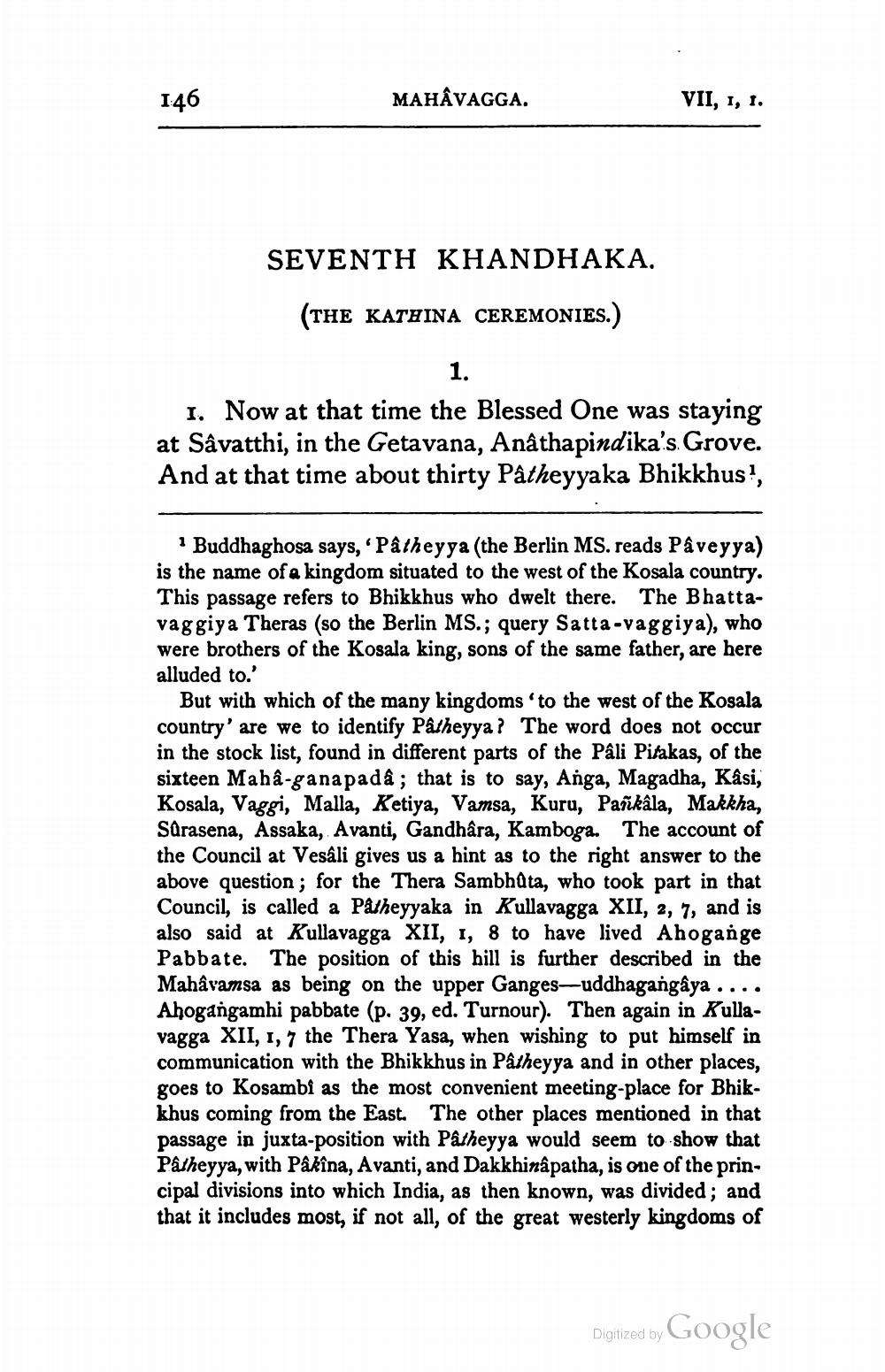________________
146
MAHAVAGGA.
SEVENTH KHANDHAKA.
(THE KATHINA CEREMONIES.)
VII, 1, 1.
1.
I. Now at that time the Blessed One was staying at Sâvatthi, in the Getavana, Anâthapindika's. Grove. And at that time about thirty Pâtheyyaka Bhikkhus1,
1 Buddhaghosa says, 'Pâtheyya (the Berlin MS. reads Pâveyya) is the name of a kingdom situated to the west of the Kosala country. This passage refers to Bhikkhus who dwelt there. The Bhattavaggiya Theras (so the Berlin MS.; query Satta-vaggiya), who were brothers of the Kosala king, sons of the same father, are here alluded to.'
But with which of the many kingdoms 'to the west of the Kosala country' are we to identify Pâtheyya? The word does not occur in the stock list, found in different parts of the Pâli Pitakas, of the sixteen Mahâ-ganapadâ; that is to say, Anga, Magadha, Kâsi, Kosala, Vaggi, Malla, Ketiya, Vamsa, Kuru, Pañkâla, Makkha, Sûrasena, Assaka, Avanti, Gandhâra, Kamboga. The account of the Council at Vesâli gives us a hint as to the right answer to the above question; for the Thera Sambhuta, who took part in that Council, is called a Pâtheyyaka in Kullavagga XII, 2, 7, and is also said at Kullavagga XII, 1, 8 to have lived Ahogange Pabbate. The position of this hill is further described in the Mahâvamsa as being on the upper Ganges-uddhagangâya.... Ahogangamhi pabbate (p. 39, ed. Turnour). Then again in Kullavagga XII, 1, 7 the Thera Yasa, when wishing to put himself in communication with the Bhikkhus in Pâtheyya and in other places, goes to Kosambi as the most convenient meeting-place for Bhikkhus coming from the East. The other places mentioned in that passage in juxta-position with Pâtheyya would seem to show that Pâtheyya, with Pâkîna, Avanti, and Dakkhinâpatha, is one of the principal divisions into which India, as then known, was divided; and that it includes most, if not all, of the great westerly kingdoms of
Digitized by Google




